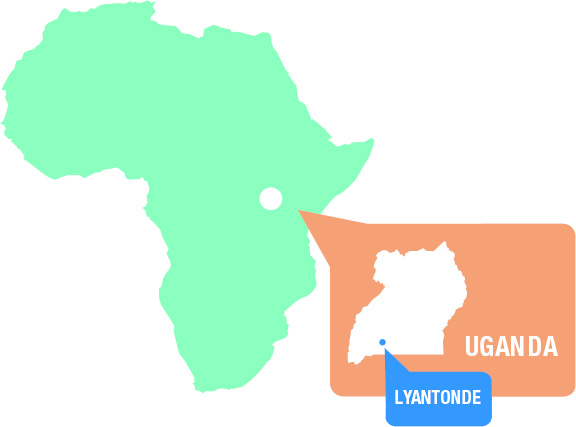
Under the layers of stereotypes and broad generalizations, lay a reality rarely seen by the Western eye: hope and resiliency in the face of war, poverty, and disease; rich cultural heritage and vibrant colors amidst congested traffic. Project FOCUS aims to share the beauty and complexity of life in Uganda through the artwork and stories of people that live there. For more comprehensive information about Uganda, we encourage you to visit the links in our resources + section.
The history of HIV/AIDS in Uganda can be divided into three distinct phases. The first, from the late 1970s to the early 1990s, saw the rapid spread of HIV through urban sexual networks and along major highways from its origin in the Lake Victoria region. Doctors in the area identified a surge in cases of severe thinning known locally as ‘slims disease’, as well as a large number of fatal opportunistic infections. In 1982, the first AIDS case in Uganda was diagnosed and the link between 'slims disease' and AIDS was clinically recognized. By this time the country was in the midst of a major epidemic, with prevalence rates as high as 29% in urban areas.
From 1992 to 2009, HIV prevalence fell dramatically from a peak in 1991 of around 15% among all adults and over 30% among pregnant women in the cities, to around 5% in 2001. It is thought that the government’s ABC (Abstain, Be faithful, use Condoms) prevention campaign was partly responsible for the decline in prevalence. However, as treatment was not widely available in Uganda during this time, the high numbers of AIDS-related deaths also contributed to the reduced number of people living with HIV.
The third phase of HIV/AIDS in Uganda has seen the stabilization of prevalence rates from 2000-2005, with reports of a slight increase since 2006. Free antiretroviral drugs have been available in Uganda since 2004. It is thought that the availability of drugs to treat HIV may have led to complacency, as AIDS is no longer an immediate death sentence; this may have contributed to the suspected rise in new HIV infections. Many experts have also speculated that Uganda’s shift in prevention policy away from ABC towards US-backed abstinence-only programs may also be responsible for an increase in risky behavior, as comprehensive sex education and condom promotion are no longer mainstream.
Lyantonde is a newly formed district in Southwestern Uganda. Before 2007, Lyantonde was located in Rakai district, the epicenter of Uganda’s HIV/AIDS epidemic. Since the first recorded cases of AIDS in 1982, the disease has spread throughout communities in the district with recent reports citing a 12%-18% prevalence rate. Mortality associated with AIDS has depleted the adult population – devastating the local economy and precipitating an orphan crisis without historical precedent. HIV/AIDS, the loss of parents, and a generation of orphans struggling to survive on their own continues to perpetuate a cycle of disease, economic desperation, and sexual exploitation.
Despite the overwhelming task at hand, residents in Lyantonde have responded to the HIV/AIDS crisis by forming community-based organizations like ICOD to support the needs of orphans and vulnerable children through the provision of immediate aid and the implementation of sustainable development projects in collaboration with international partners.
For more information about Uganda
www.enteruganda.com/about/history.phpCurrent news about Uganda
www.monitor.co.ug